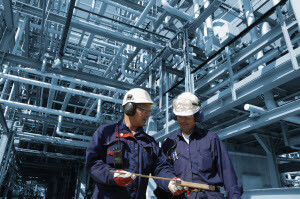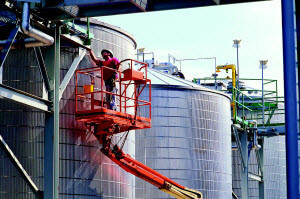Preventing Oxygen Valves Fires: Kindling Chains and Common Ignition Mechanisms
When working in the compressed gas field, it’s important to be aware of the dangers that could arise from ignitions. Even more important is understanding what to do to prevent these ignitions for the safety of the facility and the facility workers.
The European Industrial Gases Association (EIGA) discusses oxygen pipeline and piping systems used in the industry and how to ensure their safe design and operation. Being well-versed in the safe design, manufacture, installation, operation, and maintenance of valves used in liquid oxygen and cold gaseous oxygen systems is crucial to prevent damaging incidents.
 To make sure that liquid oxygen valve specifiers, suppliers, and manufacturers and those who clean, assemble, install, operate, and maintain these valves understand how to reduce the risk of ignition, the EIGA released a publication that covers isolation valves, check valves, pressure relief valves, and drain and vent valves in air separation units and their backup and storage piping systems. Learn more about the details of the publication below.
To make sure that liquid oxygen valve specifiers, suppliers, and manufacturers and those who clean, assemble, install, operate, and maintain these valves understand how to reduce the risk of ignition, the EIGA released a publication that covers isolation valves, check valves, pressure relief valves, and drain and vent valves in air separation units and their backup and storage piping systems. Learn more about the details of the publication below.
Common Ignition Mechanisms
Typically, the most common ignition mechanisms occur because of improper system or component cleaning, improper operation, or improper maintenance. Your system’s oxygen concentration, pressure, gas velocity, and temperature are also factors. These factors can influence ignition mechanisms, which can result in combustion.
About Kindling Chains
 When there’s a kindling chain, either a contamination in the system or a non-metallic component ignites. The combustion continues to ignite materials, thus producing a chain.
When there’s a kindling chain, either a contamination in the system or a non-metallic component ignites. The combustion continues to ignite materials, thus producing a chain.
To minimize the risk of a kindling chain, the system must be cleaned and meet oxygen requirements. Other methods include eliminating ignition mechanisms where possible; increasing the burn resistance of valve components; reducing dirt, debris, particles, hydrocarbons, and cleaning agent residues in a valve; eliminating metallic particles that form during assembly; and avoiding environmental contamination.
Reduce Probability of Ignition
The changes that this publication recommends to reduce the probability of an ignition or mitigate the risk of a kindling chain include several steps.
- Eliminate or minimize the mass of non-metal components.
- Use non-metals with a higher auto ignitions temperature, higher mechanical resistance, and lower heat of combustion.
- Use burn-resistant alloys suitable for the operating conditions.
- Design so metal components are at a thickness that’s burn-resistant suitable for the operating conditions.
- Design to protect non-metals by avoiding contact with direct flow and encapsulation in metal as much as possible.
- Change operating parameters for transient/worst-case scenarios.
- Mitigate consequences through isolation/barriers.
Because safety is the top priority at CPV Manufacturing, we make sure that the parts we supply that are used in oxygen service are cleaned. One way we ensure safety is with our 10,000 class oxygen clean room. With our own clean room, we can guarantee that the products being used in oxygen service are safe and reliable and there won’t be any trace of hydrocarbons.
Click here to learn more about CPV Manufacturing and how our products can benefit you.
